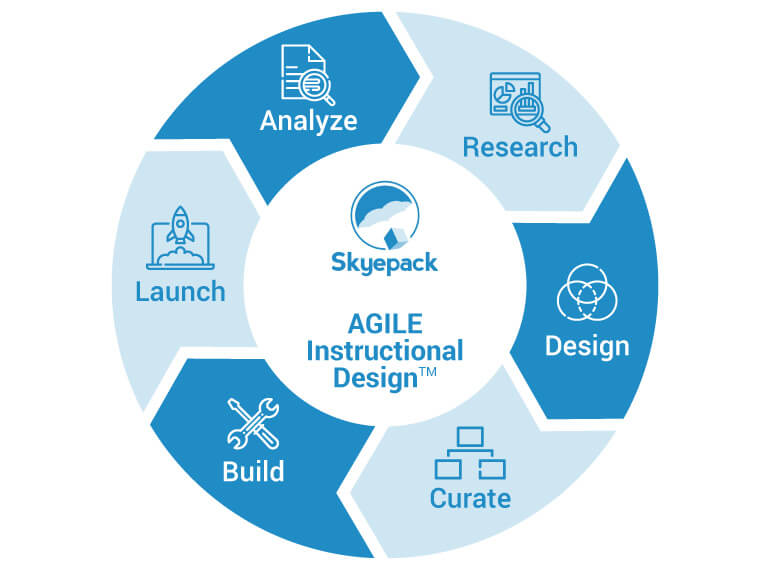In any industry, working professionals will be more successful in their roles if they invest time in continuing education and development. Even when operations are business as usual, there are always new certifications to earn or new tech systems to navigate.
And of course, this year has been anything but business as usual, leaving many employees tasked with adapting to a new work environment. Amid this transformation, workers have also needed to take on brand new skills in addition to traditional training.
Whether this means attending virtual events, enrolling in digital continuing education courses, or simply reading relevant articles or books with industry best practices, employees have not stopped trying to advance their skills. Therefore, conference organizers and continuing education providers must find ways to connect and offer value from a distance.
An engaging and effective online training course gives working professionals the opportunity to advance their knowledge and abilities.
At Skyepack, we understand the challenges and opportunities of online learning. In crafting digital courses for countless university classrooms and professional development programs, we’ve learned the ins and outs of creating an exciting and informative learning experience. Based on this work, we’ve compiled a list of best practices for creating your own highly effective business training course:
- Create an interactive and engaging online course.
- Consider the needs of your learners.
- Choose the right course subject and content.
- Make continuous improvements to the course over time.
With the right platform and content, your students will be well-positioned to succeed in their roles and become more productive, efficient, and skillful. Plus, access to professional development helps boost employee satisfaction and long-term retention. Overall, these tips will help you to build a continuing education program that proves to be a worthy investment in your business’s future. Let’s jump in.
1. Create an interactive and engaging online course.
First things first—lackluster training courses with photocopied packets, disjointed lectures, and ho-hum video modules are a thing of the past.
Now, business training courses must include multimedia content, interactive elements, and an intuitive format in order to be successful.
With a dynamic and interactive online course, students will be more likely to engage deeply with the content and achieve learning objectives.
Compared to an in-person course with physical materials, an online course has a long list of advantages. We explore many of these benefits in the Skyepack guide to digital course materials, but here are a few to consider:
- Digital materials are convenient and portable. With a cloud-based online platform, learners will be able to access the course from a variety of desktop and mobile devices and make progress on the go. An online course also allows each student to work at their own pace, so you never have to try to fit a training session into everyone’s jam-packed calendars.
- Online courses are affordable. When held in person, training sessions or workshops can be pricey. Online courses are often less costly to develop and offer to your employees or conference attendees.
- Online material can be accessed long after the course is complete. In an in-person course, students may have printed materials or their own handwritten notes to walk away with. This content can be easy to misplace or lose completely. With an online course, learners can receive lifetime access to the material to reference as needed.
With these advantages, it’s clear why an online platform is critical to the effectiveness of your business training course. Plus, an online course fits in well with today’s social distancing concerns. Your learners will still be able to access professional development content while working remotely.
2. Tailor your platform to the needs of your learners.
Choosing an online format for your course is the first of many decisions when creating a solid educational program.
As you determine the specific platform for your course and begin the process of designing the instructional material, you’ll have a lot to consider. As you do so, be sure to always keep the needs of your learners in mind.
Your demands on a course delivery platform and plans for the course itself will differ widely depending on the intended audience. For example, take the following groups:
- Conference attendees. If you’re hosting a virtual conference or another virtual event, you may be offering an online course in conjunction with other programming or as follow-up material. Consider when and how your learners will access the content. Do you need a way to integrate course access with your online registration software? Will you cover the same topics as the conference or provide new information? As you think about these questions, keep in mind the goals and professional backgrounds of your conference’s attendees.
- Employees. If you’re offering a training course within your company, you’ll want to consider how to leverage the most business value from the course. When executed well, a continuing education (CE) program can have a solid return on investment due to increased productivity and enhanced skills. To assess these benefits, look for a course builder that allows you to track employee progress or even sync with your performance management software.
Whether you’re an association professional, HR specialist, or conference organizer, tailoring your course requirements to the needs of your audience will create a more successful learning experience overall.
Once you’ve determined your technical needs, you can move on to the instructional design of the course—while still prioritizing the needs of your learners.
3. Choose the right course subject and content.
Deciding which topics and content areas to cover can feel like an overwhelming challenge. With so many educational resources and possibilities available, how do you know where to start?
Determine the focus of your training course by evaluating the needs of your learners and of your business as a whole.
Make use of any past CE data or survey potential learners as you consider the following questions:
- What topics have your employees expressed interest in in the past?
- What areas of your business have room for improvement?
- Are you adopting any new technologies?
- Have you updated any internal processes?
These answers will provide a jumping-off point as you determine what to cover, but they may not give you the whole picture. In addition to looking within your company to design your course, you should also take external inspiration into account.
Analyzing competitors and collaborators in your space can help you to zero in on the most useful topics. Conduct research to find any new industry developments that your employees or attendees would find interesting.
Additionally, determine what existing free virtual training resources are available for your industry, then try to create something new rather than reinventing the wheel. For instance, this DonorSearch article rounds up a list of useful virtual training resources for nonprofit professionals. Develop a similar list of easily accessible resources so you can determine what to skip.
Once you decide which topics to cover, you’ll be able to pull together the information that makes up your actual course content. If you’re not experienced in curriculum development, consider partnering with a provider that will curate the course on your behalf based on your specifications.
Finally, be sure to organize your material in a logical and easy-to-understand manner. If your course builds on key topics and introduces new material as it progresses, it will be much more effective than a jumbled list of topics.
4. Make continuous improvements to the course over time.
Whether you’re making adjustments to make next year’s event strategy even more streamlined or making tweaks to simplify an internal process, it’s likely that you and your organization’s leadership spend a lot of time thinking about how to improve.
With a business training course, this goal should be no different. While it may be easy to think of course creation as a “set it and forget it” task, you’ll be better off in the long run if you approach the course as a living entity.
By implementing an iterative approach in your course design process, you can make continuous improvements as needs arise. For instance, you may decide to revise a section based on low student performance or introduce a new topic based on a recent industry trend.
Here’s what the process of iterative curriculum development can look like:

In this diagram, notice how the entire design process is rooted in research and analysis. This echoes back to the emphasis on learners that we’ve discussed throughout this article. At every stage of creating your training course (even after it has launched!), you should always be asking whether it adequately supports the needs of your organization and each individual.
To wrap up, a business training course can be a significant asset to improve the value of your conference or boost productivity at your company.
As you plan and develop your course, just be sure to prioritize your unique goals and requirements. With an online course that is custom-built to the needs of your learners, you’ll be prepared to meet your objectives and create an engaging educational experience for all. Good luck!
—————————————————————————————————————————
Author Bio: Brady Kalb, CEO
Brady is a “reformed engineer turned entrepreneur”. After engineering gigs at two Fortune 100 companies, Brady left the corporate world to pursue a business degree and seek out new challenges. Brady’s passion for education stems from his desire to “always be learning” and find innovative solutions to difficult problems. Brady enjoys family outings to the park, explaining the answers of “Life, the Universe, and Everything” to his daughters, and reading just about anything (favorites are classics, popular fiction, and biographies).



















